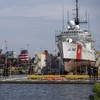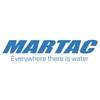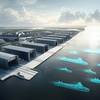Damen Delivers Purpose-built Offshore Chasers
The delivery of the Aquarius-G and her sister ship Astra-G to offshore services company RederijGroen (Scheveningen, the Netherlands) marked a milestone in Offshore Support Vessel construction. According to Damen, never before have such Chasers have purpose-built. The vessels were designed by Saltwater Engineering in close cooperation with both RederijGroen and Maaskant Shipyards Stellendam. Both Seismic Research Support Vessels were constructed by Maaskant Shipyards Stellendam, part of Damen Shipyards Group.
“Indeed, all our other SRS Chaser vessels so far involve converted fishing trawlers”, HenkGroen, director and proprietor of offshore company RederijGroen proudly noted about his new twins. “Having designed them to our specific needs right from the drawing board significantly enhances the vessels’ deployability and performance. Their sharply reduced sway and maneuverability are just two examples”, Mr. Groen added.
The Aquarius-G and sistership Astra-G are Guard Vessels or Chasers. One major task is to ensure that other shipping, mainly fishing ships, will keep distance from Seismic Survey Vessels engaged in offshore exploration. To literally chase-off. The trawlers’ nets might otherwise damage the costly seismic streamers trailing behind the survey vessels.
A further key activity for the SRS vessels are the alongside operations, featuring a variety of services to the seismic survey mothership. Whilst sailing alongside, such assistance includes the board-to-board transhipment of goods and equipment. The two new SRS vessels have a two-ton at a 10.5-meter reach deck crane. The 105 square meters of free space at the aft deck provides sufficient storage capacity to include several ISO maritime containers. An aggregate 16 cubic meters of temperature controlled cells cater for other auxiliary services.
As a significant improvement, the two purpose-built Chasers feature superior nautical capabilities over the converted fishing trawlers, Damen said. Their sharply lesser sway benefits both the alongside operations and the crew’s comfort.
“Seismic research is done at a sailing speed not exceeding four knots. At such low speeds, the ship needs to be both stable and maintain good maneuverability”, HenkGroen says. SRS vessels also measure sea current near offshore rigs to ensure a safe close passage for the seismic survey ship. “So keeping lane at very low speeds is vital for this precise work.” All of this is being put into practice as the Astra-G is currently working at its first assignment in the BarentzSea.
The Aquarius-G was named by the granddaughter of Mr.HenkGroen and daughter of Mr. Erik Groen. The Astra-G, however, was named by Mrs. Gerda van Dongen, wife of Maaskant director Frits van Dongen. The rare phenomenon for a shipyard naming its own product, underscores the close ties with offshore company RederijGroen. “For decades Maaskant has been performing maintenance and repair for our entire 22-strong fleet of offshore vessels”, shipowner Groen noted. “Futhermore, we have built all their other SRS vessels”, Mr. Van Dongen added. “These all involved fishing trawler conversions. Until now that is.”
The two novel Seismic Research Support Chasers have a 40-meter length over all, 9.3 meters width, 3.3 meters draught, with accommodation for a complement of fourteen. Top speed is 14 knots.
www.rederijgroen.nl
www.damen.com












